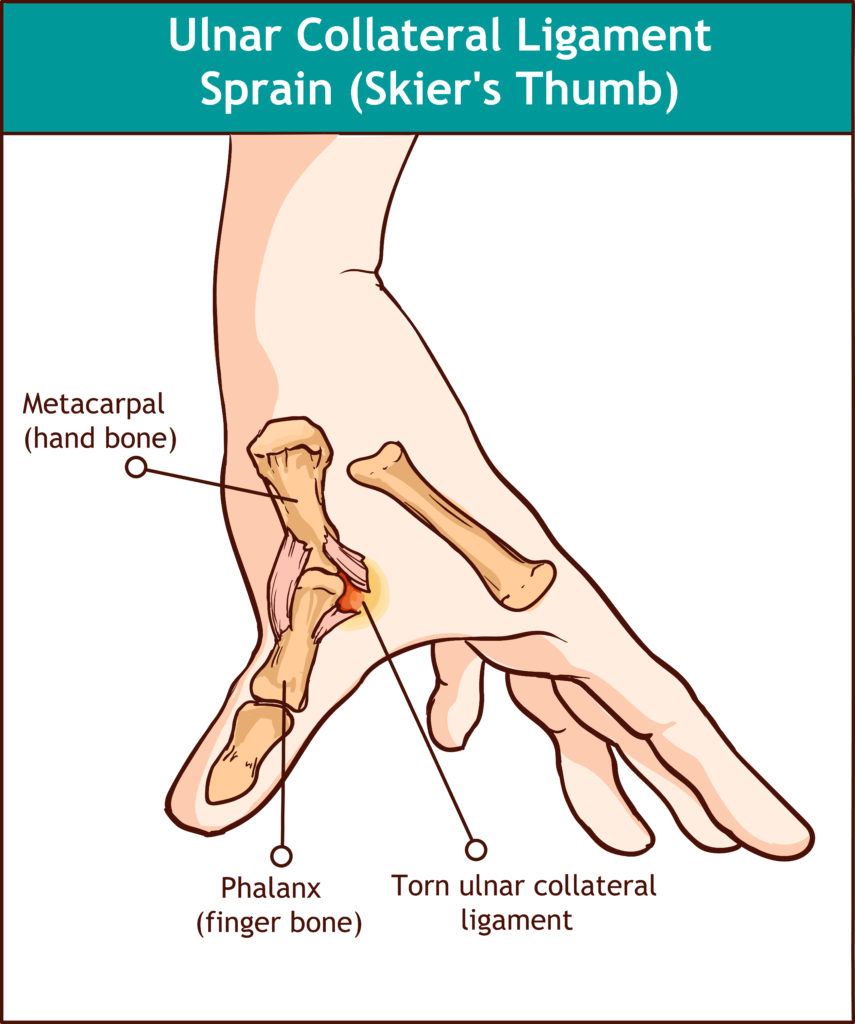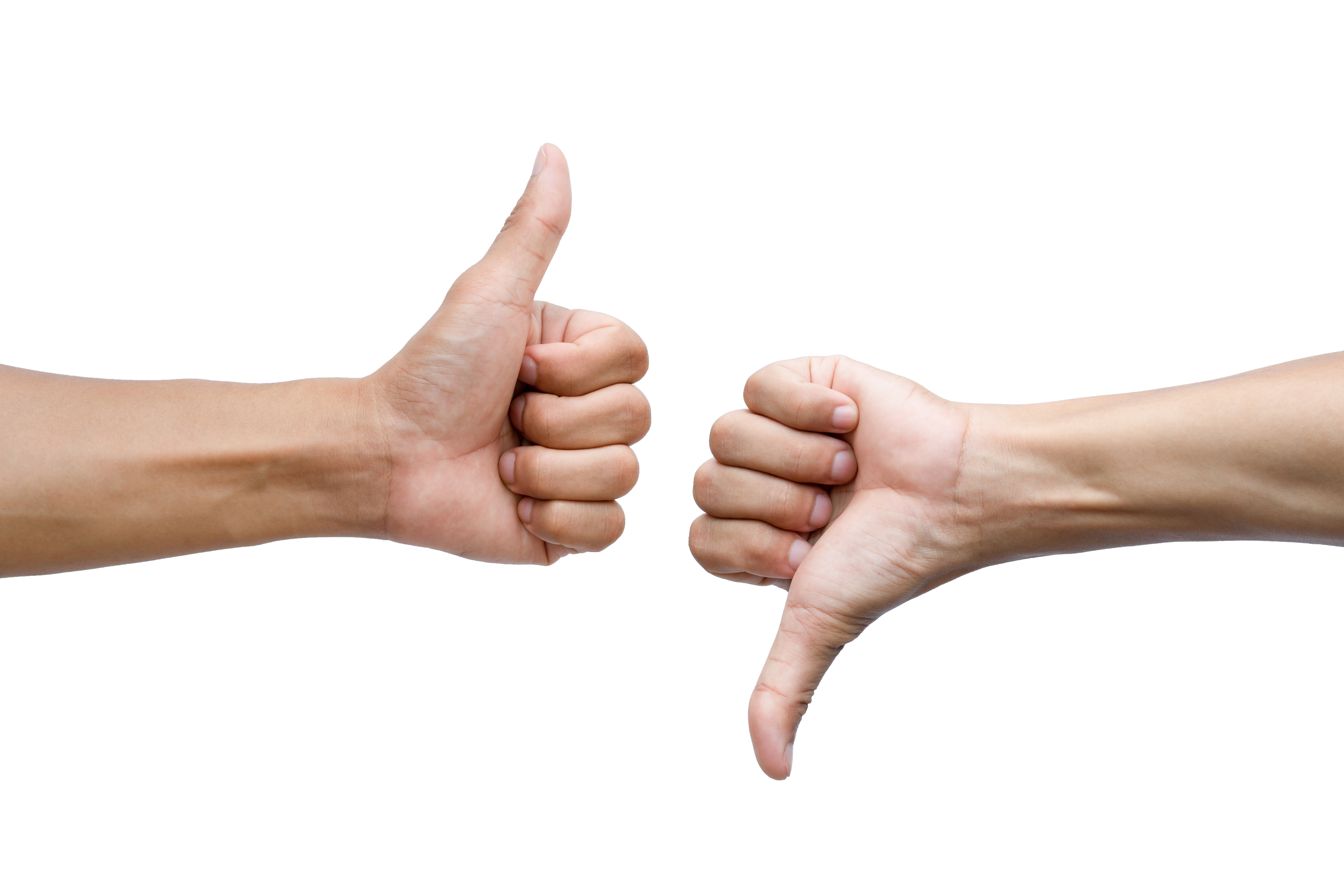The ulnar collateral ligament (UCL) of the thumb is commonly injured by falling onto an outstretched hand or in sports where the thumb metacarpal phalangeal joint (MP) is hyperextended or hyper-abducted. This injury can have many names such as “skiers thumb”, “gamekeepers thumb”, and “break dancers thumb.”
What is a ligament?
A ligament is like a piece of tape that holds 2 bones together. It is a non-contractile tissue (i.e. not muscle) that creates the stability of joints. For example, most people have heard of the MCL that stabilizes the knee. The UCL of the thumb is found in the webspace of your thumb and the first finger holding together and creating the stability of the thumb.
What is a ligament sprain?
Ligament sprains are classified into 3 categories:
Grade 1 sprain (mild)
A minimal tear of the ligament fibres causing mild pain and no laxity.
Grade 2 sprain (moderate)
A partial tear of the ligament fibres with pain and increased laxity.
Grade 3 sprain (severe)
A complete tear of the ligament fibres which may or may not be painful and increased laxity.
Signs and Symptoms
- pain around the thumb, especially in the webspace
- possible swelling and bruising around the thumb
- decreased range of motion and grip/pinching strength
- a feeling of instability at the thumb
Physiotherapy Assessment and Treatment
A physiotherapist will conduct a thorough history and physical examination to determine if you are presenting with a UCL of the thumb injury. Treatment can include multiple therapeutic modalities, manual therapy, and a comprehensive exercise program. In some cases, it may be necessary to immobilize your thumb in a thumb spica cast or splint to promote optimal healing before starting rehabilitation. Proper diagnosis and treatment of the thumb are necessary to avoid long term complications including chronic pain, weakness, instability, and osteoarthritis.

It is important to have your injury evaluated by a physiotherapist so they can determine the appropriate course of treatment.
Medical Management
If you are unsuccessful with conservative management such as immobilization and physical therapy, there may be a surgical repair option depending on the individual injury and severity of the ligament tear. In this case, you may be referred to a hand surgeon for a consultation. This referral can be done in collaboration with your physiotherapist and family doctor.





